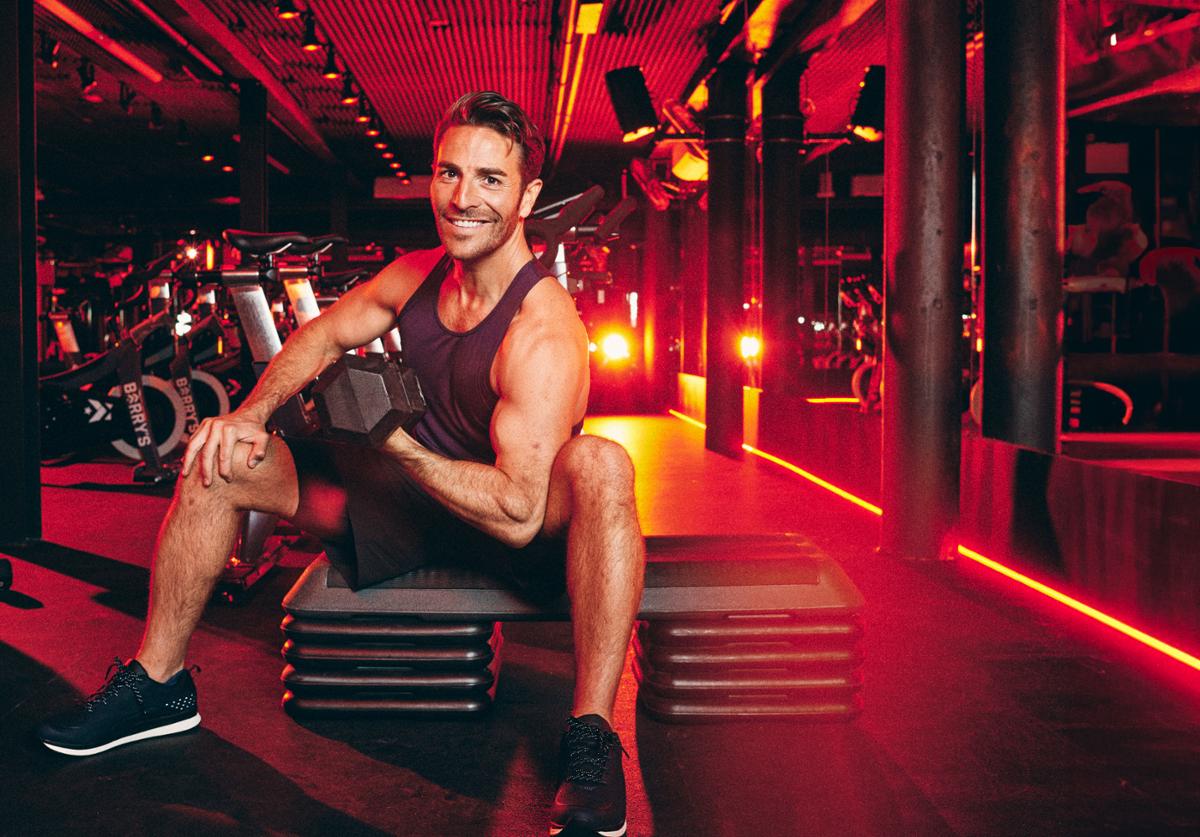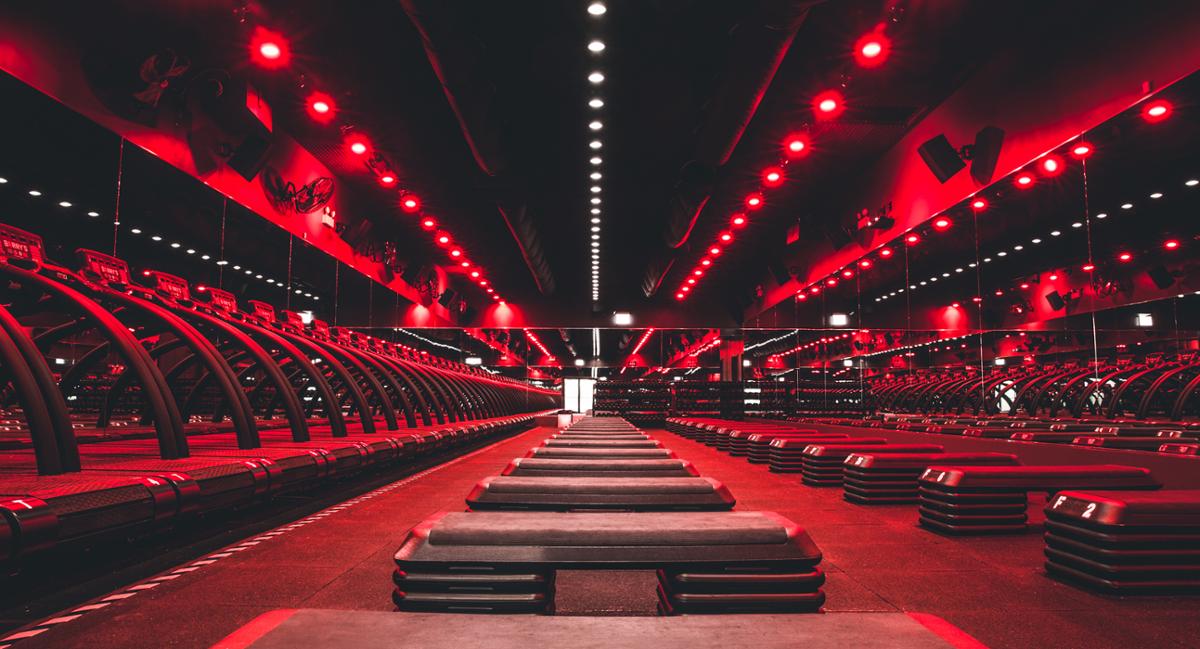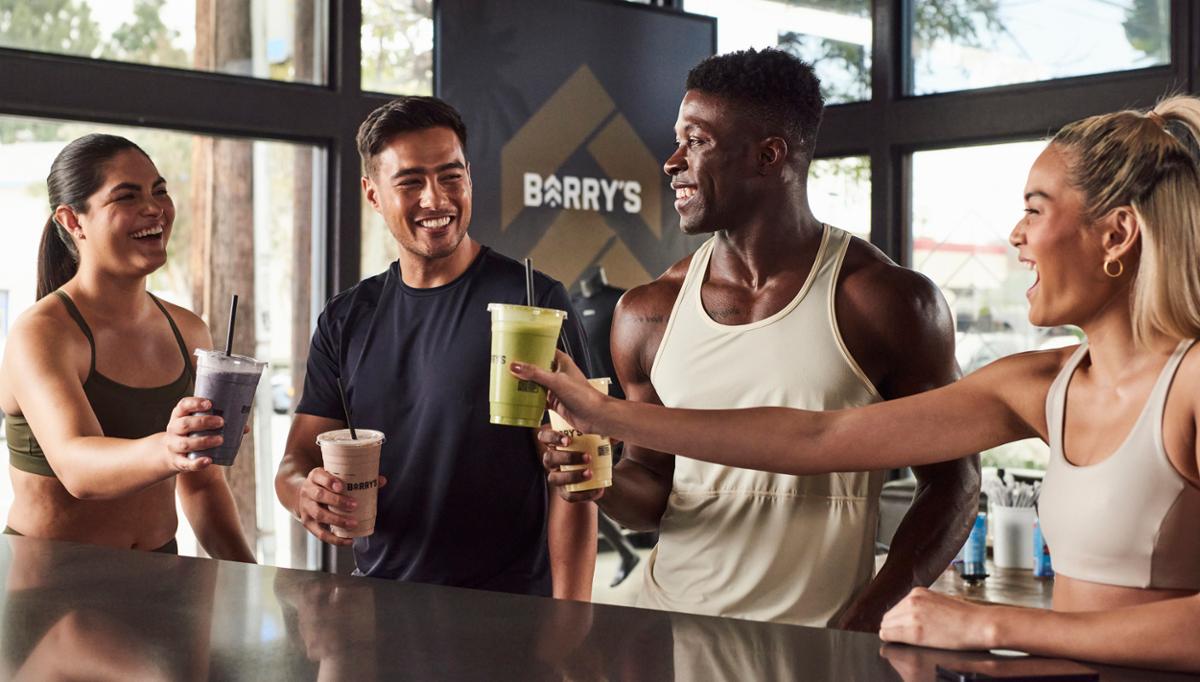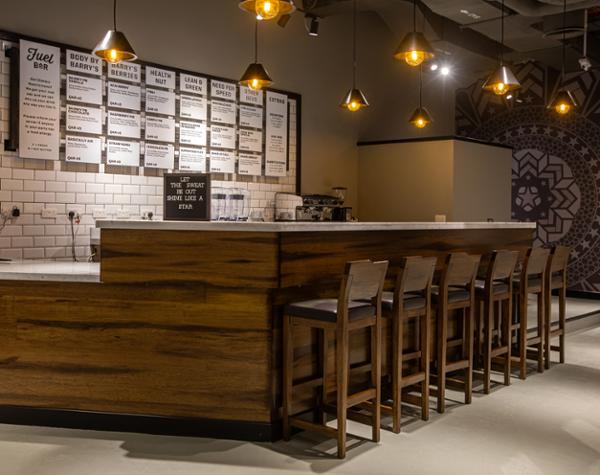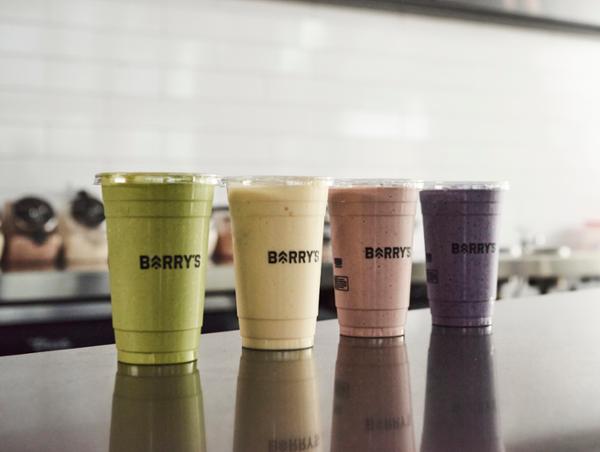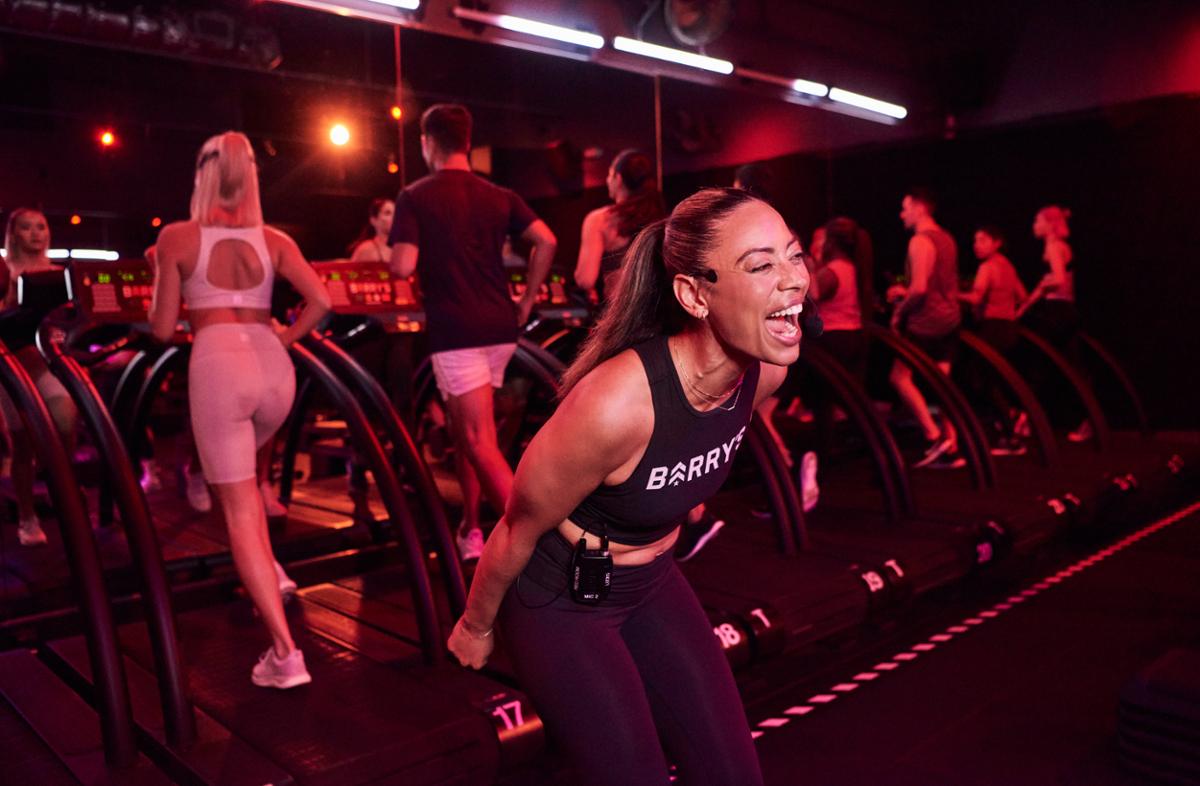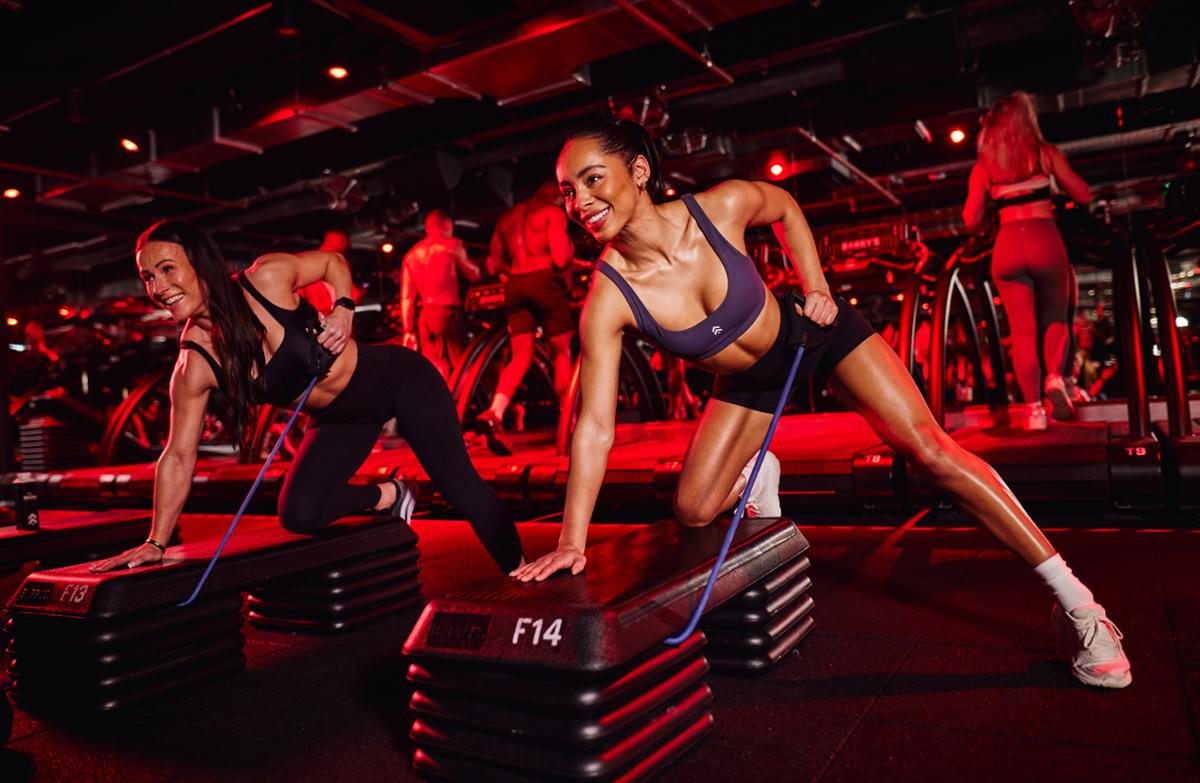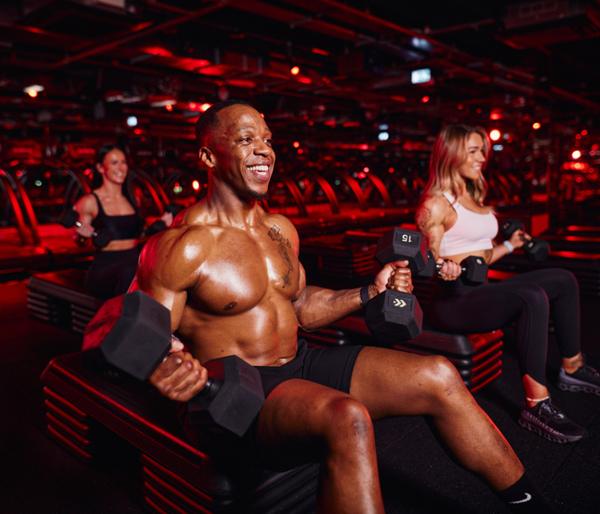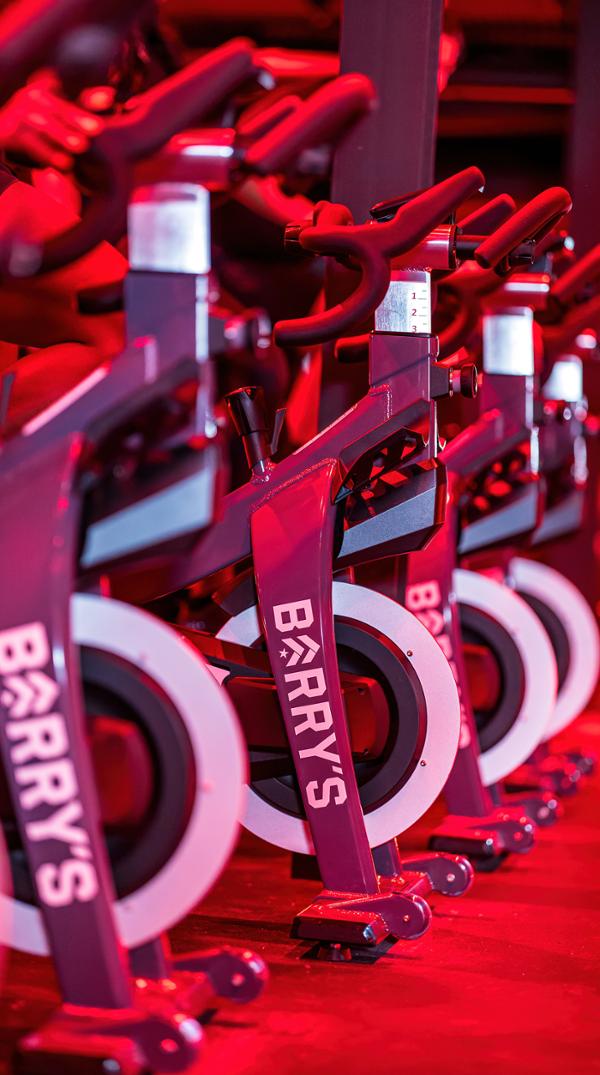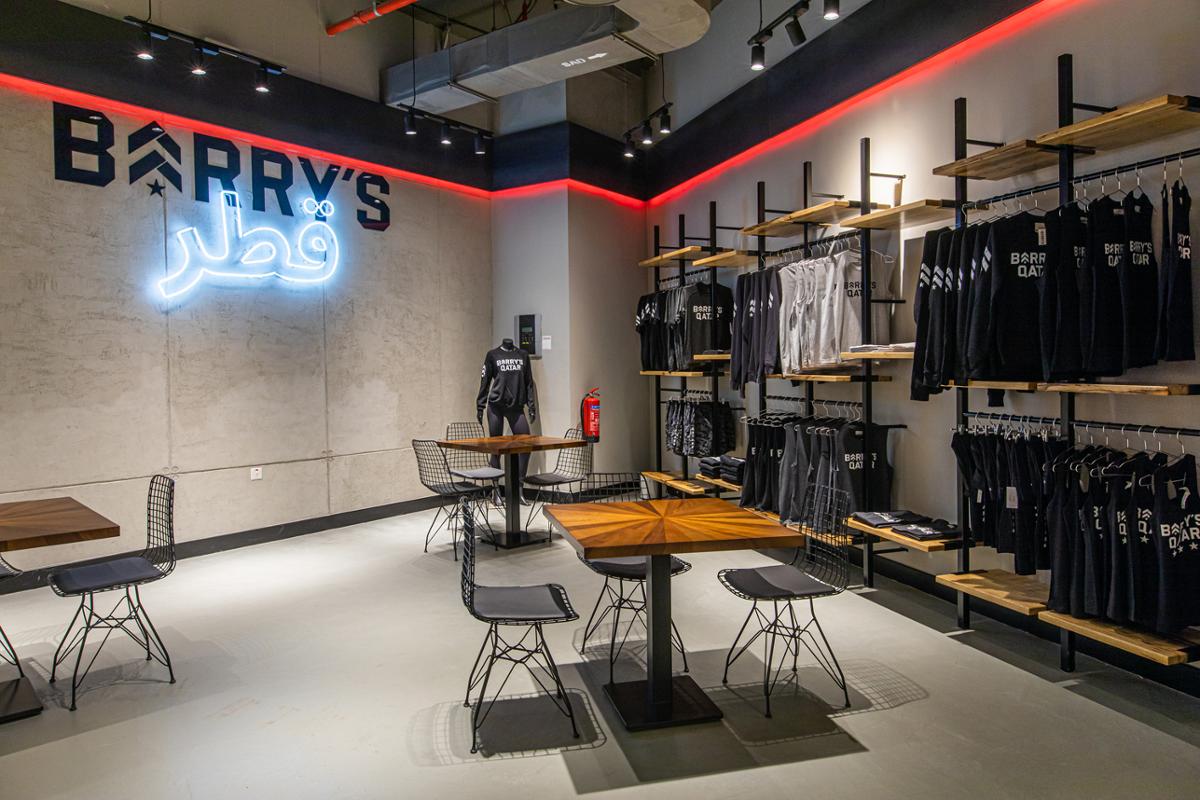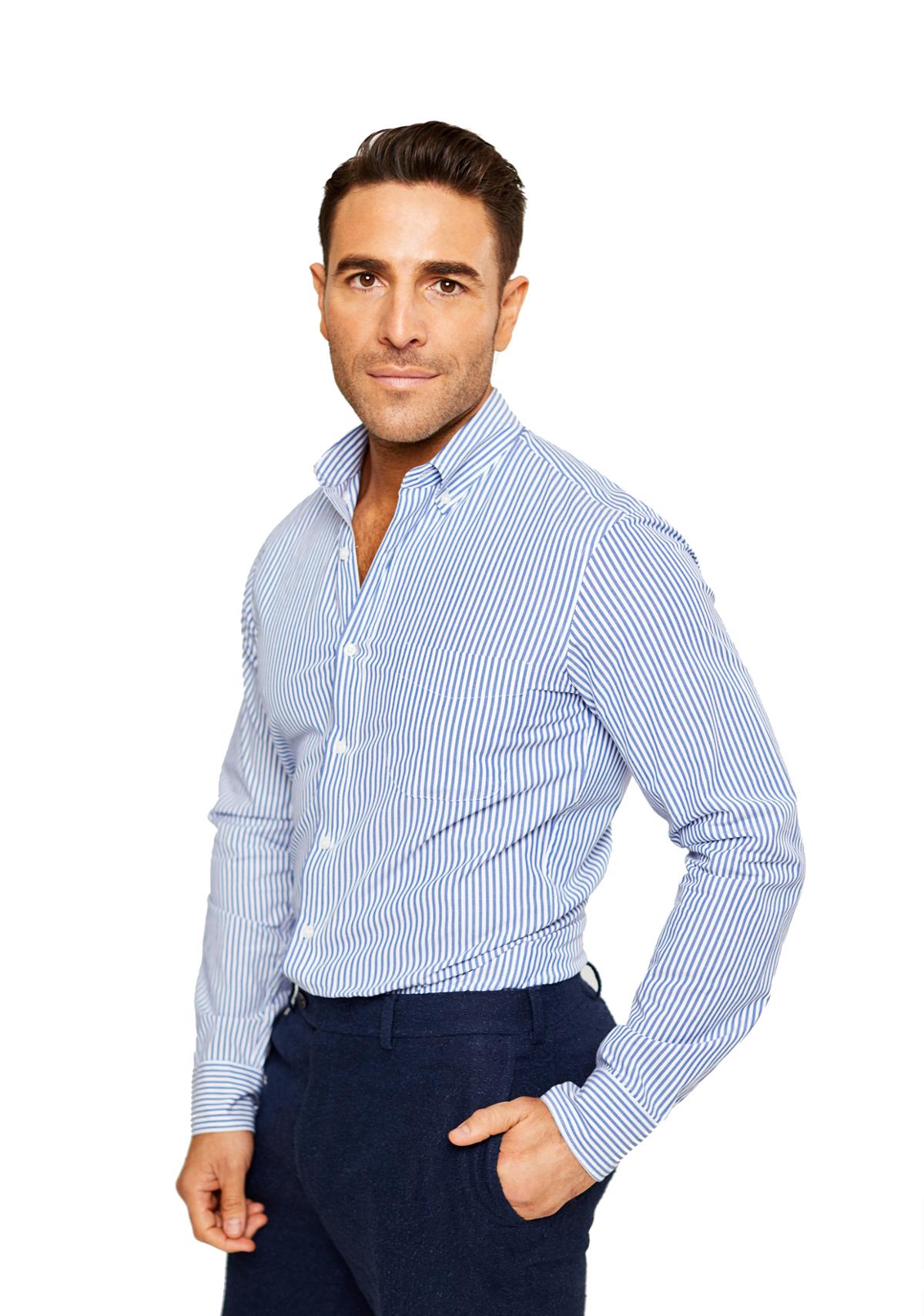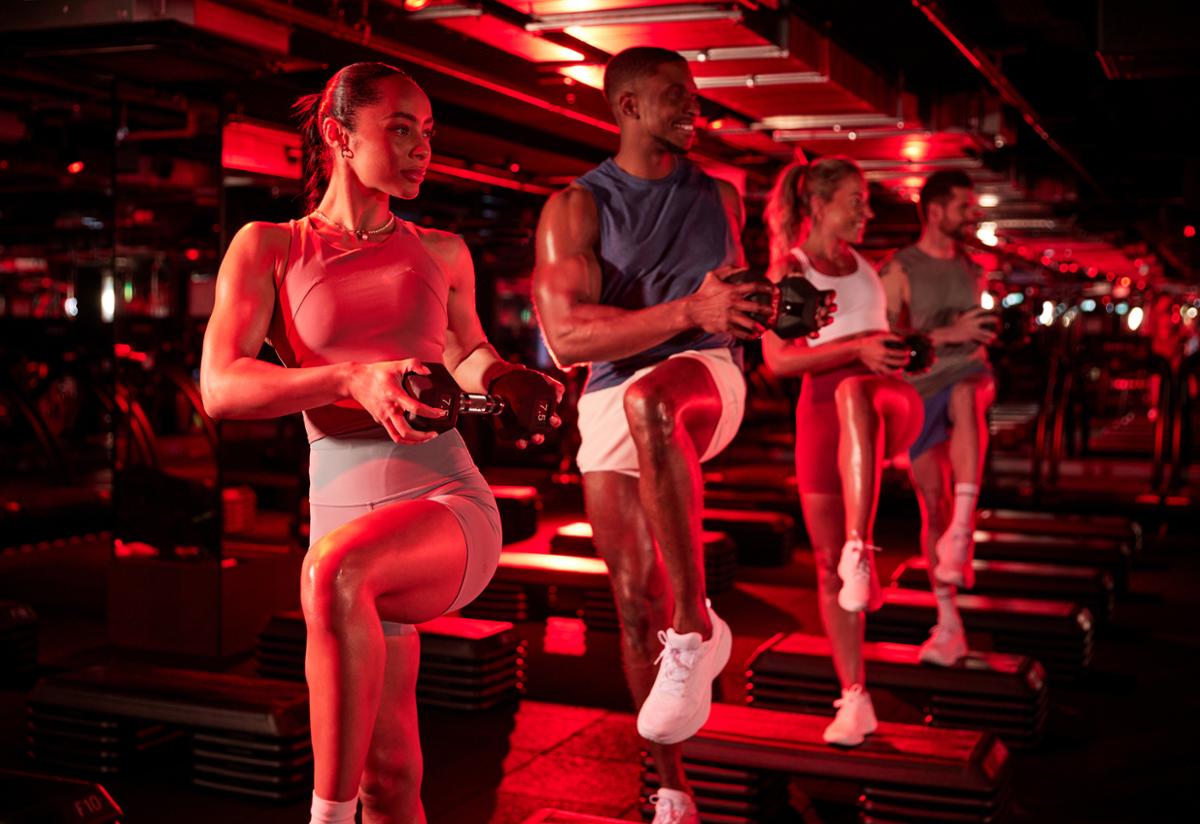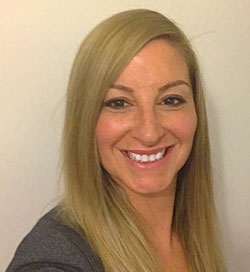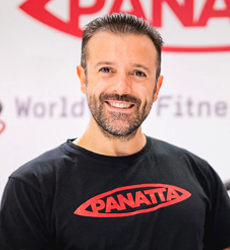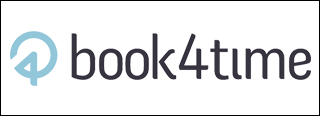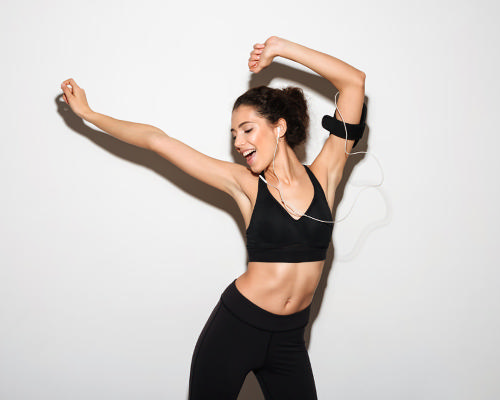Tell us about the birth of Barry’s
The story goes back to the 1990s. Founder Barry Jay was teaching in a big box gym in Los Angeles and was very frustrated with the set-up – the small group fitness room with typical faux hardwood floor and tiny neoprene weights.
He wanted more for his clients, so split the class in half and sent half of them out to grab big, heavy weights and the other half to treadmills and proceeded to bark orders back and forth, running in and out of that little room.
Soon enough, Barry was fired, but luckily he’d done this long enough for people to see the efficacy of the workout and become evangelists of his approach. In John and Rachel Mumford, he found an investment team who helped him open the very first Barry’s Bootcamp in West Hollywood in 1998.
Back then, Barry’s was not for the faint-hearted. Military-themed – with camouflage walls and a dog tag logo – it was all about high accountability, with extremely challenging workouts that appealed to elite athletes. If you weren't doing what Barry asked you to do, you would definitely be in trouble! The experience you got in the Red Room was very much a bootcamp.
The brand identity and experience have changed significantly since, although the design and the essence of the Red Room – feeling like a nightclub – remain. Barry was sober and had left all clubbing behind, but he wanted to bring that feeling to Barry’s so people could have a fun, party-like experience in a healthy environment.
What’s your own Barry’s story?
I started out as a client. I was at a crossroads in my life – frustrated, sad and hopeless – and this brand walked into my life and changed everything. It reminded me anything is possible.
I’d actually learnt that lesson at a very young age, from my Cuban refugee father who built his entire life over from scratch, but having a brand come into my life and reawaken that in me was a gift.
In 2004, I became a Barry’s instructor. It’s a privilege to hold any role at Barry’s, but our instructors are the most spoiled. They’re literally changing lives, one inch away from the person, and they’re getting that feedback every day. Even now, whenever I teach classes, people will tell me how Barry’s has changed their life.
Over the years, that feedback has made it really easy for me to commit my life to taking Barry’s to as many places as possible.
In 2005, I became a manager. At that point there were just two Barry’s studios – West Hollywood and Sherman Oaks in Los Angeles – and the investors felt pretty strongly that it would be challenging for this concept to survive outside of their own backyard, limiting the potential for growth.
It took a wide-eyed, optimistic, passionate young man like me to come in and say: ‘This is going to work everywhere. Let’s do it – let’s take it everywhere!’
And….?
After five years of saying that, I was allowed to put my money where my mouth was and become an investor. We moved the brand into different parts of the country and I invested capital each time. I wanted to prove the portability of the brand.
Our original sites were just 1,400sq ft, with a capacity of around 30 people. They were very no-frills – there was even a toilet in the Red Room and when people used it, you knew!
By 2010, when I started to build out our first New York City studio – Barry’s Chelsea – we completely changed the footprint, as the landscape had shifted by then, other brands were starting to emerge and we wanted to differentiate Barry’s.
We quadrupled the footprint, introduced beautiful finishes and a large studio, as well as a more spacious lobby where people could pop open their laptops and stay. We brought in premium amenity partners for things such as haircare products and we created a Fuel Bar – our food and beverage experience – where we designed all the recipes in collaboration with my husband, Jonathan Rollo, who’s a chef. That was really fun.
Chelsea was also the first studio where we integrated Woodway treadmills, which came in at around six times the price of our previous treadmills and really changed the business plan. However, I’d been convinced by one of my good friends, Justin Timberlake, that it was the best product out there.
I hadn’t seen it before he showed it to me at his home, and his response was: ‘How do you not know this treadmill? You own a running company!’
This was 2011 and what I designed there in New York City was the iteration of Barry’s that you’ll now see around the world.
At that point, we still had the same, original brand identity, but within about three years we started to evolve that as well. We dropped the dog tag and were more subtle with our military homage, creating a chevron logo and moving to a colour palette of greys, whites, blacks and red rather than camouflage greens and orange.
The way we taught classes also changed a bit, making it less in-your-face, more inclusive with new clients, more mindful of modifications and offering a broad range of speeds on the treadmill and weights on the floor. We became less punitive and more upbeat, encouraging and positive in the way we taught. That was around 2014 and we haven’t changed significantly since then.
But we have grown. In 2015, I became global CEO and have led the scaling of the brand identity, workout, spirit and voice of Barry’s. We now have 84 studios in 14 countries, from the US to the UK, Canada, Australia, Germany, France, Sweden, Denmark, Dubai and more.
You also launched a digital platform...
Barry’s X launched during lockdown and offers a variety of modalities for US$39.99 a month, both live and on-demand.
On-demand is the convenient option. Joining live lets you feel a connection to the community and you might also have your camera on so the trainer can correct your form. Some new studios promote Barry’s X during pre-sale, so clients can start training with us before the studio even opens.
We have the appetite to expand into further modalities and create more à la carte content – shorter pieces of content that people can pick and choose and combine.
Our product and core competency is still delivering the best in-person experience – Barry’s X is icing on the cake – but it’s an incredible opportunity to stay connected to our clients and broaden our reach. Whether it’s connecting with people digitally or creating new modalities such as Ride and Lift, every innovation is designed to deliver on our mission to transform lives worldwide.
Tell us about your different modalities
Run x Lift, using treadmills and weight benches, is the original concept (O.G.).
Ride x Lift has bikes instead of treadmills – we tend to refer to that simply as Ride. And then Lift is benches only. Those are the three modalities in the family.
We piloted Ride in 2020, and Chelsea NYC is now the first location to have a permanent Ride studio. Many people don’t know this, but that was actually my plan from the minute I signed the lease in 2010. It’s nice to have finally been able to execute on that vision.
The next Barry’s to get a Ride studio will be West Hollywood, which we’re moving to a brand new flagship location on Santa Monica Boulevard. A beautiful 8,000sq ft space, we’ll have two studios, so we’ll be able to open Ride in the place where it all started.
Ride has all the beat drops, lighting and everything else people enjoy in an O.G. class, but it’s even more palatable for newer clients –people who are either intimidated by the treadmill or who need low-impact exercise. First-timers are really enjoying the experience and there’s a great conversion rate.
Our current focus with Ride is proving the modality in more than one market: West Hollywood will get us there. We also need to create all the assets to scale it – talent training manuals and so on – because we’re really starting from scratch with a new product.
So many of our partners globally are asking if they can open Rides in different parts of the world, but we want to make sure we have all our T’s crossed and I’s dotted first, so we can scale in an efficient way that’s also on-brand and best-in-class.
How did Lift come about?
In around 2006, I started to notice a significant percentage of Barry’s clients asking to opt out of the treadmill portion. We’d initially accommodate them by bringing in an extra bench, but we quickly realised there was a great opportunity to deliver and monetise this product. From that moment on, every studio we built had more benches than treadmills and we sold ‘Double Floor’ spots in class. In some markets and studios, those benches are so popular they book out immediately.
There was a clear opportunity for Barry’s to deliver a strength-only concept, so we launched Lift in 2016. We now have nine Lift studios in the US and cities such as Toronto and London.
As with Ride, Lift is a studio B modality that sits alongside the O.G.; Ride and Lift are never standalone. But it’s a very popular product; in some cities, Lift is even more highly utilised than our O.G. concept. The studios are around half the size, so it sells out faster, but it’s definitely been a success for us.
Are you planning further new modalities?
I’m very entrepreneurial, so that’s where I naturally want to spend time, but I know I have to apply discipline and temper those desires appropriately. It’s really important for us that we focus and prove each new modality has legs. We’re less interested in having six different modalities, but in fewer places, than in having half the number of modalities in many different places and spaces.
What we are focusing on at the moment is our ‘wow’ initiative, ensuring every instructor is teaching Barry’s in a way that makes the treadmill and floor feel united. Where everyone’s on the same journey. Where there are musicality, choreography, drops and hero moments. A lot of cardio-based concepts do that, but I think our ability to deliver HIIT in this way really differentiates us.
You mentioned more sites to come. Where will they be?
Three new US studios are slated to open at the end of 2023, including our relocated West Hollywood studio, and another three in Q1 2024. All will be corporately owned; when I became CEO, part of my 100-day plan was to buy back as many of the US franchises as possible, and the only remaining franchise is now Miami.
Internationally, we have a combination of joint ventures and franchises. We’ve recently announced Israel, which is a three-studio development –the first will be in Tel Aviv – and we announced an Iberian partner last year. Real estate has been very challenging there, but the first studio will be in Madrid or Barcelona. We’re also opening in Bahrain and are targeting an end-of-year opening date for that studio.
We could certainly get to 200 studios before 2030, with all our modalities operating globally by that point.
What new from your investors?
North Castle Partners intended to invest for around five years, so in February 2020, we were preparing to hit the market. Then obviously the pandemic came. We’ve spent the last three years getting the business back to where it was at that point, and I’m happy to say we’re on track and expect 2024 to look a lot like 2019. We’re already starting to have conversations around what a transaction might look like – another private equity play.
How have you been celebrating 25 years?
I can’t believe I have a baby that’s turned 25!
We’ve been celebrating in style. Every birthday, we have a frequency campaign where we invite clients around the world to take X amount of classes in Y amount of days. They then receive a prize for completing the challenge.
This year, to celebrate 25 years, the goal is 25 classes over the course of five weeks, although there’s an option to halve that and take 12.
We also hosted a massive party in Los Angeles on 5 October – our actual birthday – to celebrate a quarter-century of being the best workout in the world, with some exciting headline guests performing and a huge line of Woodway treadmills.
The following two days, we hosted a series of 225-person capacity classes – the most we’d ever done before was 100 – with live DJs and multiple instructors around the room and the whole space designed to deliver an incredible experience.
What’s the secret of your continued success?
I think about this question so often, and there are a lot of answers I could provide, but I think it comes down to how connected our customers feel with our brand. It’s so authentic and always so clearly Barry’s.
The way the brand speaks and feels and looks, the values it puts forward, such as work hard and have fun… these are values I think a lot of people cherish and enjoy. There’s no better feeling.
The brand is amazing – I find it hard to come up with the words to describe it – and as with many great brands, to a certain extent it lives on its own, this intangible thing that’s so powerful.
The power of leadership
What we’ve done as leaders is continually innovate, because life changes so much year by year, decade by decade.
Barry’s has never sat back and said: ‘Well, this is how we do things and we’re not going to change or evolve.’ We’ve done the opposite: we’ve changed significantly over the past 25 years. We’re always thinking about who our customer of tomorrow is, trying to be inclusive of them without ever turning our back on our customers of today.
More: www.barrys.com








